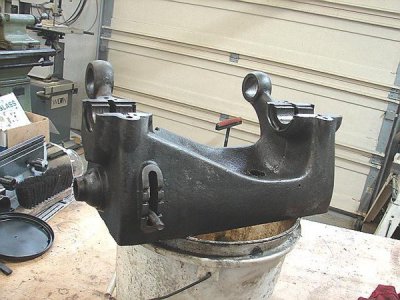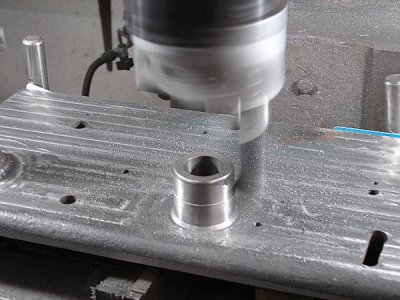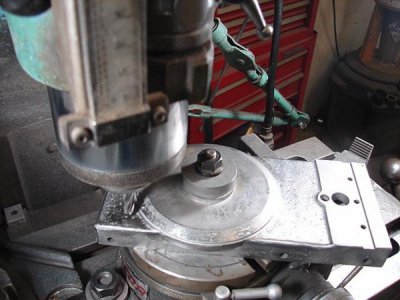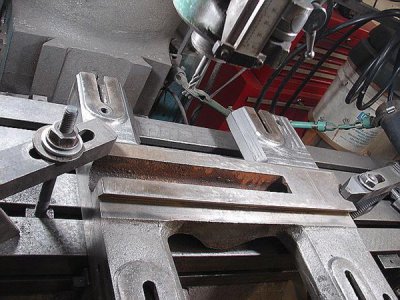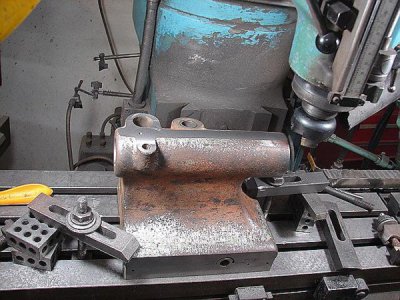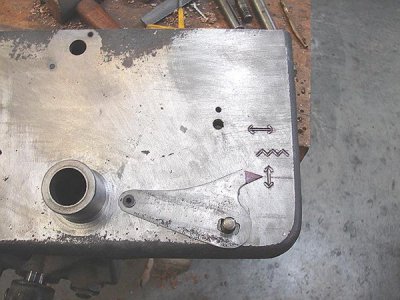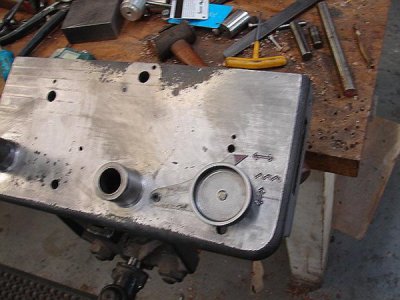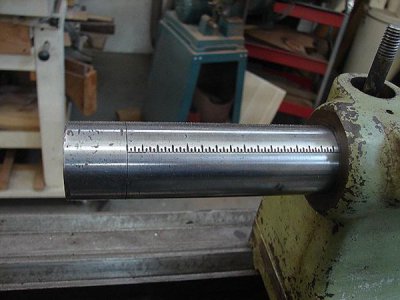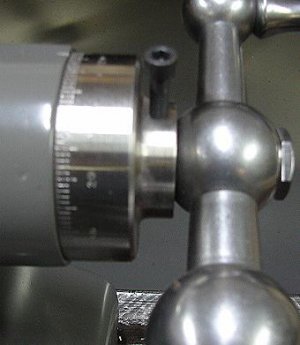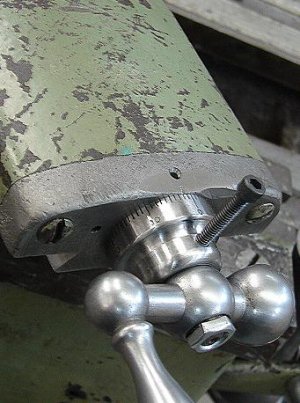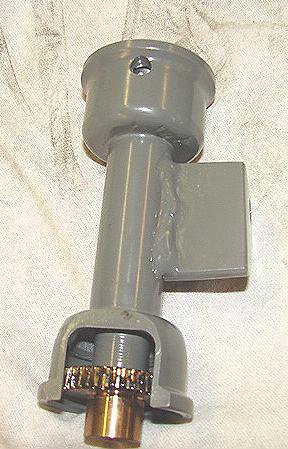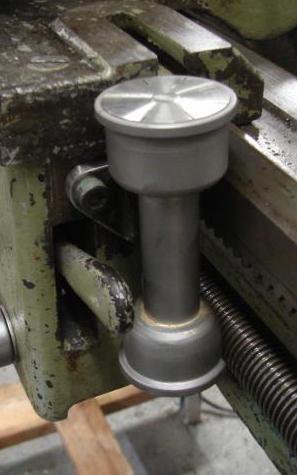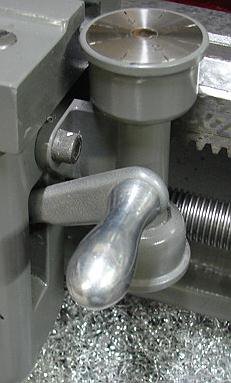- Joined
- Oct 3, 2015
- Messages
- 982
One of my buddies, and beginner machinist acquired this Seneca Falls lathe back in Sept. He was like a kid at christmas time with all the excitement of owning his first lathe. Despite the fact that it has to be 100 yrs old and in bad need of some TLC, the machine is truly very sound as far as wear. As you can see, at one time it must have been in the hills of Appalachia, where the custom drive train conversion was installed. It consisted of a Borg-Warner T-86 3 speed truck transmission, driven with a lawn sprinkler motor.
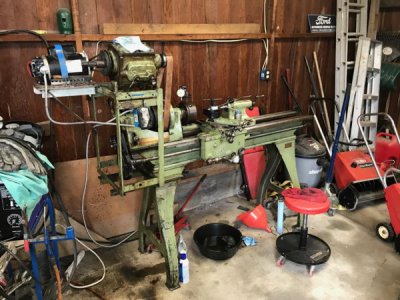
I encouraged him to buy it, for a starter machine and then realized that most of the work that it needed was past his skill level and pay grade. So I stepped up to be a mentor and took on the job of rebuilding this machine, while he helped and learned in the process. I must say, this has been fun and exciting for me as well, and I learned a few more skills. This project came to fruition last week, so I will tell the story from the time we removed the first nuts and bolts.
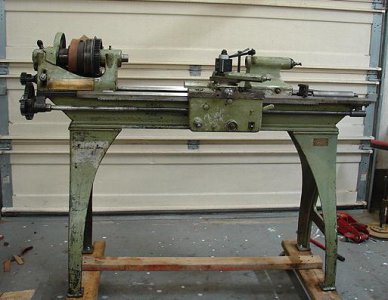
Once we removed the redneck racing speed selector, we got a better overall view of what had to be done.
There is nothing wrong with a flat belt drive, but it would help if we woulda had the other cone pulley. Finding one of these that was compatible would be like finding unicorn tears. I came up with the idea to make a cone pulley from hardwood. I started with a sleeve to slide on to a keyed shaft, then epoxied the pulleys to the sleeve.

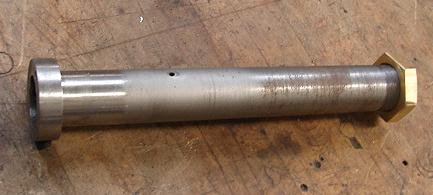


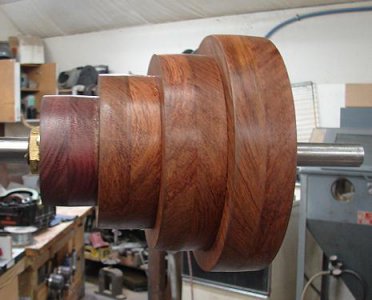
With that done, it gave me a better idea how to position the rest of the drive train and motor mounts.
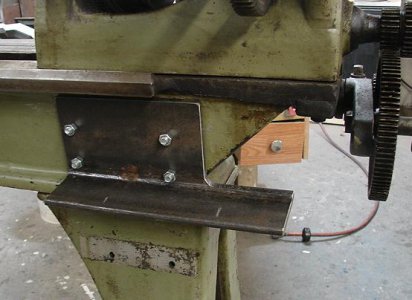
I used some existing holes in the bed for the anchor plate.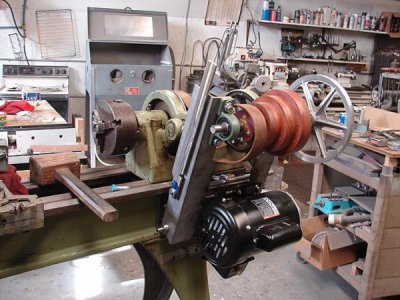
Once the anchor was in place, the rest of the brackets could be positioned and tacked up.
The motor/pullet bracket pivots on a 1/2" shaft, and the belt tensioner is operated with a 3/4" shaft with a simple over -center type extender with an adjustable link.
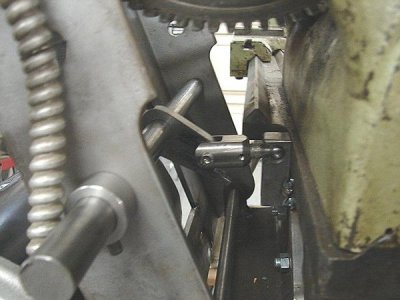
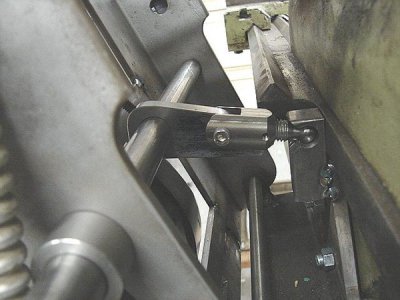
This creates about 1" of slack to change the belt over to a different pulley.

I encouraged him to buy it, for a starter machine and then realized that most of the work that it needed was past his skill level and pay grade. So I stepped up to be a mentor and took on the job of rebuilding this machine, while he helped and learned in the process. I must say, this has been fun and exciting for me as well, and I learned a few more skills. This project came to fruition last week, so I will tell the story from the time we removed the first nuts and bolts.

Once we removed the redneck racing speed selector, we got a better overall view of what had to be done.
There is nothing wrong with a flat belt drive, but it would help if we woulda had the other cone pulley. Finding one of these that was compatible would be like finding unicorn tears. I came up with the idea to make a cone pulley from hardwood. I started with a sleeve to slide on to a keyed shaft, then epoxied the pulleys to the sleeve.





With that done, it gave me a better idea how to position the rest of the drive train and motor mounts.

I used some existing holes in the bed for the anchor plate.

Once the anchor was in place, the rest of the brackets could be positioned and tacked up.
The motor/pullet bracket pivots on a 1/2" shaft, and the belt tensioner is operated with a 3/4" shaft with a simple over -center type extender with an adjustable link.


This creates about 1" of slack to change the belt over to a different pulley.


